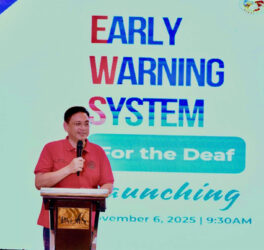
The Federal Communications Commission (FCC) has issued a notice to remind broadcasters, cable operators, satellite television services, and any other distributor of video program distributor that reach people homes that they need to aware of their obligation to make televised emergency information accessible for persons with disabilities.
This came under section 79.2, emergency information is defined as “information, about a current emergency, that is intended to further the protection of life, health, safety, and property, i.e., critical details regarding the emergency and how to respond to the emergency.”
Examples of the types of emergencies covered by the rule include pandemics, tornadoes, hurricanes, floods, tidal waves, earthquakes, icing conditions, heavy snows, widespread fires, discharge of toxic gases, widespread power failures, industrial explosions, civil disorders, school closings and changes in school bus schedules resulting from such conditions, and warnings and watches of impending changes in weather.
For people who are blind or have vision disabilities, the Public Notice notes that “ensure access to emergency information by persons who are blind or visually impaired, emergency information provided in the video portion of a regularly scheduled newscast or a newscast that interrupts regular programming must be made accessible by aurally describing the emergency information in the main audio portion of the programming”.
Responsibilities related to those that are deaf or hard of hearing include providing emergency information in the audio portion of programming also must be accessible to persons who are deaf or hard of hearing through closed captioning or other methods of visual presentation, including open captioning, crawls or scrolls that appear on the screen. Visual presentation of emergency information may not block any closed captioning, and closed captioning may not block any emergency information provided by crawls, scrolls, or other visual means.
And while not required by the FCC’s rules, the commission encourages that emergency information be accessible to people with cognitive disabilities through techniques like using plain language and pictorial information.
The FCC also provided the resources for filing complaints for violations of these emergency information rules, including www.fcc.gov/accessibilitycomplaints








